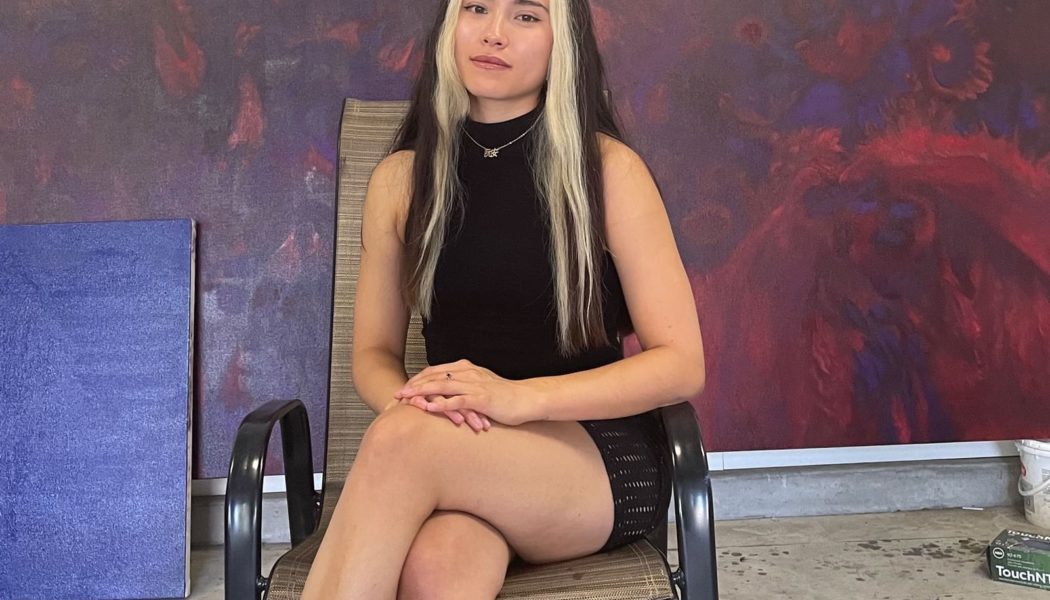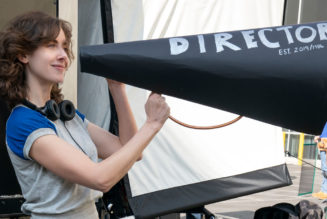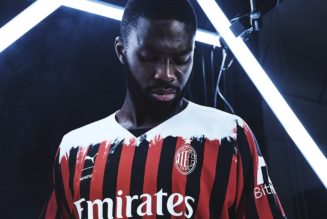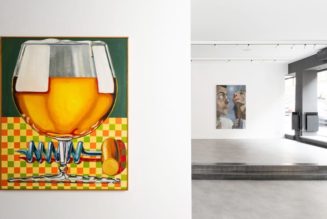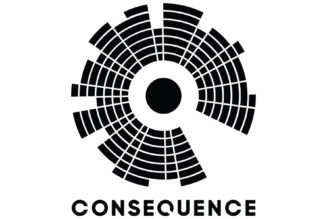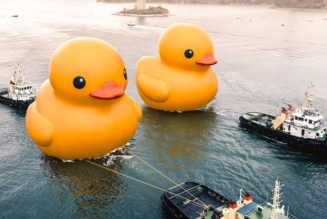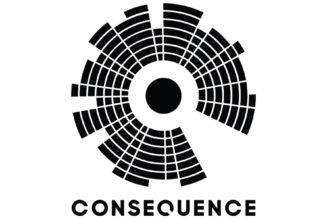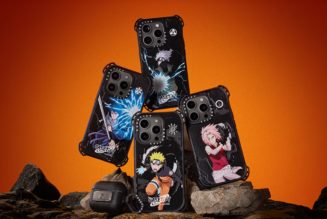Hypeart and THE SHOPHOUSE have joined forces to showcase a group exhibition titled Global Citizens – Asia. The exhibition seeks to celebrate and showcase the works of emerging Asian artists from different parts of the world, providing a platform for these artists to share their unique perspectives and artistic visions.
The exhibition will take place at a restored pre-war tong lau in Tai Hang, Hong Kong, which is a Grade III listed low-rise tenement building combining commercial and residential spaces. The location provides the perfect setting for the exhibition, as it is a blend of traditional and modern architectural elements that reflect the dynamic nature of contemporary art. The exhibition features works from 14 artists who use different mediums to express their artistic visions. The artists hail from various cities around the world, including Amsterdam, Beijing, Hangzhou, Hong Kong, Los Angeles, New York City, Seoul, Shanghai, Taipei, Tokyo, and Xuzhou.
This diverse group of artists brings unique perspectives to the exhibition, which explores the futurist implications of portraiture in contemporary society. Participating artists include Auto Moai, Ei Kaneko, Gwen Hollingsworth, Lee Jaeheon, Natisa Jones, Nobody Here, Shih Yung-Chun, Wang Qingyuan, Yang Du, Xue Ruozhe, ¥ouada, Yutaka Watanabe, Zhang Haoyan and Zhou Xinyu. Each artist brings their unique artistic vision to the exhibition, exploring themes such as identity, memory, and the impermanence of human life.
Overall, the Global Citizens – Asia exhibition provides a platform for emerging Asian artists to showcase their work and celebrate their creativity. The exhibition is a testament to the power of art to bring people together and create meaningful connections. It offers visitors a chance to engage with contemporary art and elevate their personal journey in the ever-evolving world of art.
The exhibition will open to the public from February 24th to March 12th at THE SHOPHOUSE. Get to know more about the artists and their works for the show by reading further below.
Gwen Hollingsworth
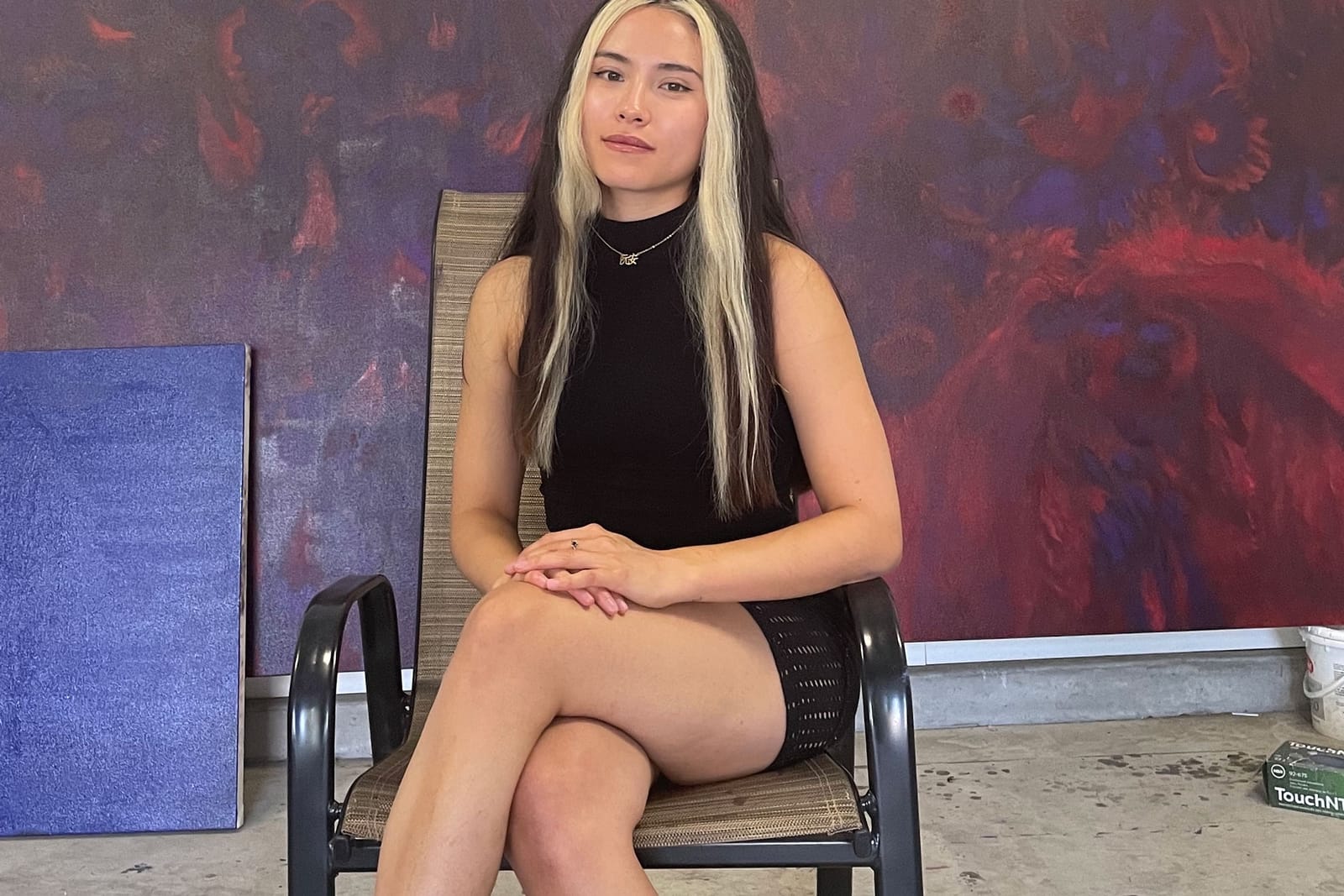
What are some of the themes your exploring in your works?
Channeling the natural world through painting, I am interested in examining the intimate and the transcendent as a way of envisioning new secular and spiritual realities, both within ourselves and in the wider world. Landscapes are a method by which to understand our journey on this planet and make sense of mortality and existence. Always beginning with a black underpainting, my work takes on a nocturnal and psychological essence. I think about nighttime as a temporal-spatial equivalent of the void, in particular, the feminine void, a psycho-geographic landscape where all life is yet to be realized. Derived from an interest in metaphysical paintings, the work charts the passage of time, feminine intuition, and personal experiences through imagery that exists between the lines of figuration and abstraction.
I am informed by traditional Chinese spiritual practices that emphasize living in harmony with the natural world as being contingent on balance and harmony within oneself, the internal environment echoing what is experienced outside. Earth and landscape are often associated with feminine traits precisely for their nurturing nature and life-giving potential. I envision this through my embodiment of Yin, the Chinese philosophical term for the feminine essence and her qualities: soft, flowing, life-sustaining, and, most notably, darkness. Creation is made in the dark. With this in mind, I aim to paint landscapes connecting the geography of the interior self, with that of the exterior world, in turn granting us more space for self knowing and harmonious living.
What are your thoughts on this co-curated show?
It is very special to me to be able to show work with contemporary Asian artists. I am excited by the theme of portraiture because I make more abstract work that doesn’t always fit into the traditional understandings of this category. However, this group show serves as an indication that the boundaries of portraiture are expanding just as what it means to be Asian/a global citizen is evolving and growing everyday and is no longer confined to specific modalities of thinking.
Lee Jaeheon
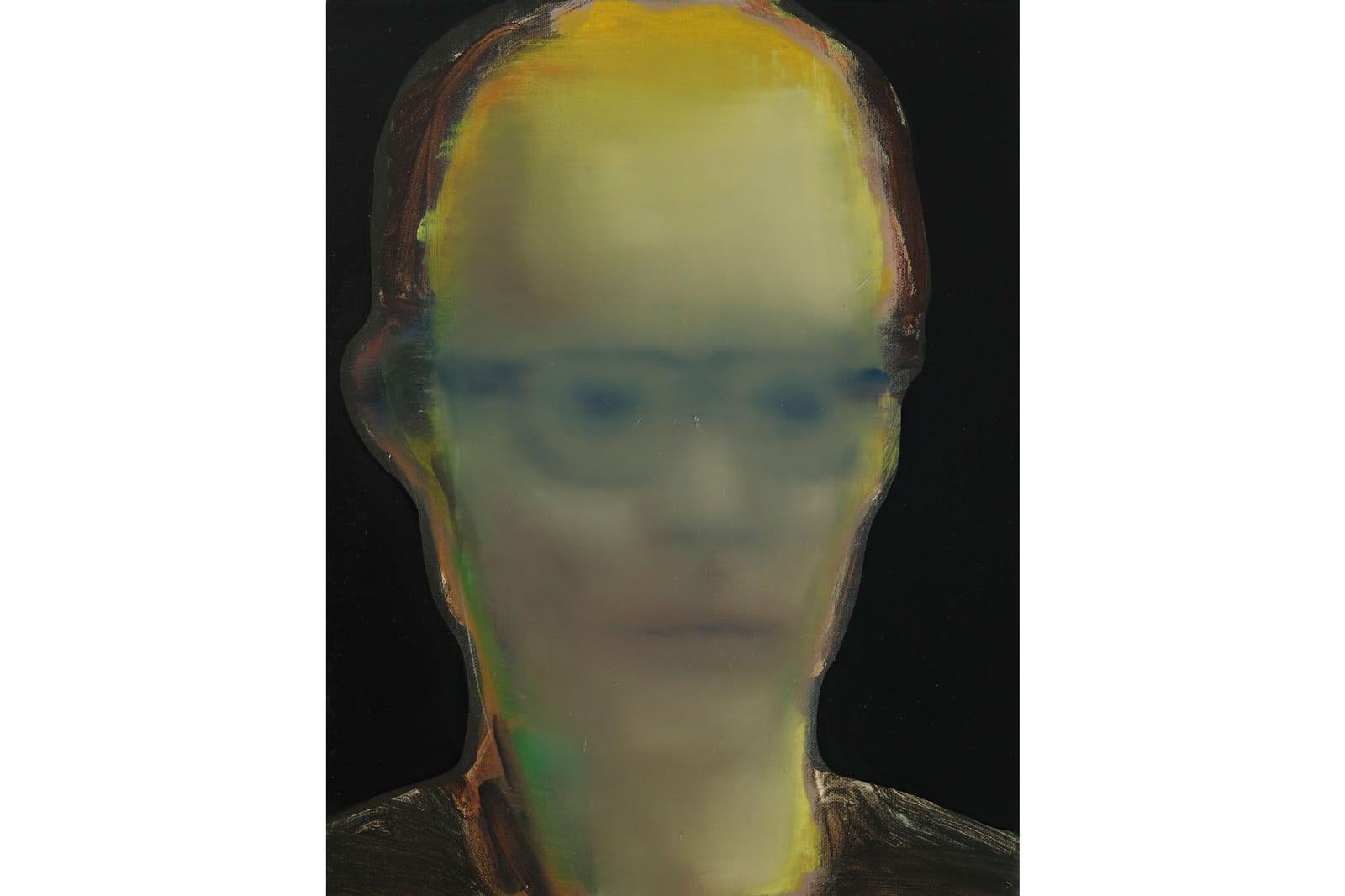
How would you describe your worldview when it comes to artmaking?
After chasing only the essence of life, now I finally look around. Everything has become possible in art, but I don’t want to put humans aside. As the sun sets, the fluorescent lights begin to glow. It seems to me that art is both human and artificial after all. A painting cannot be explained. To the artist, it becomes incomprehensible. In a way, it’s funny that I’ve arrived at such a conclusion after all that I’ve done. It cannot be defined; I feel that the way of painting is completely different. This mode of existence also renders itself inexplicable, but what is certain is that there is a way of painting that is distinct from that of language. Many try to explain it again in words, but I think it’s pointless, misunderstood, or perhaps arrogant. I was one of them and still is one. I was trained to separate my painterly self from that of a critic, but it doesn’t seem to work that way. Now, words tend to be played in the art world like a game. But it’s boring, and they pile up around the painting like dust.
Can you elaborate on this concept of language?
The point is, language’s entry is different from the approach of paintings; it has become impossible to say that it is an artist’s job to impart signifiers with language on the path of a painting. I feel that these two paths are incommensurable from the very beginning, and the limits are clear. When I leave the studio, I have no other choice but to use language as a means again. Yet the painting is only what stands in front of the painting. I again contemplate on the traces and purpose of the painting outside of it. Language is a net, and painting is a spear. It pierces through. While I try to reach inside the painting using its traces as coordinates, the spear in my hands soon disappears. Still, I don’t want to hold on to one that is made of language. I look into the small holes left by the spear of the painting. Where the void awaits, the ghost of language flickers in its resolute determination. I must not follow the glimmer. Rather, I must walk to the opposite end.Meeting fear with a smile.
Natisa Jones
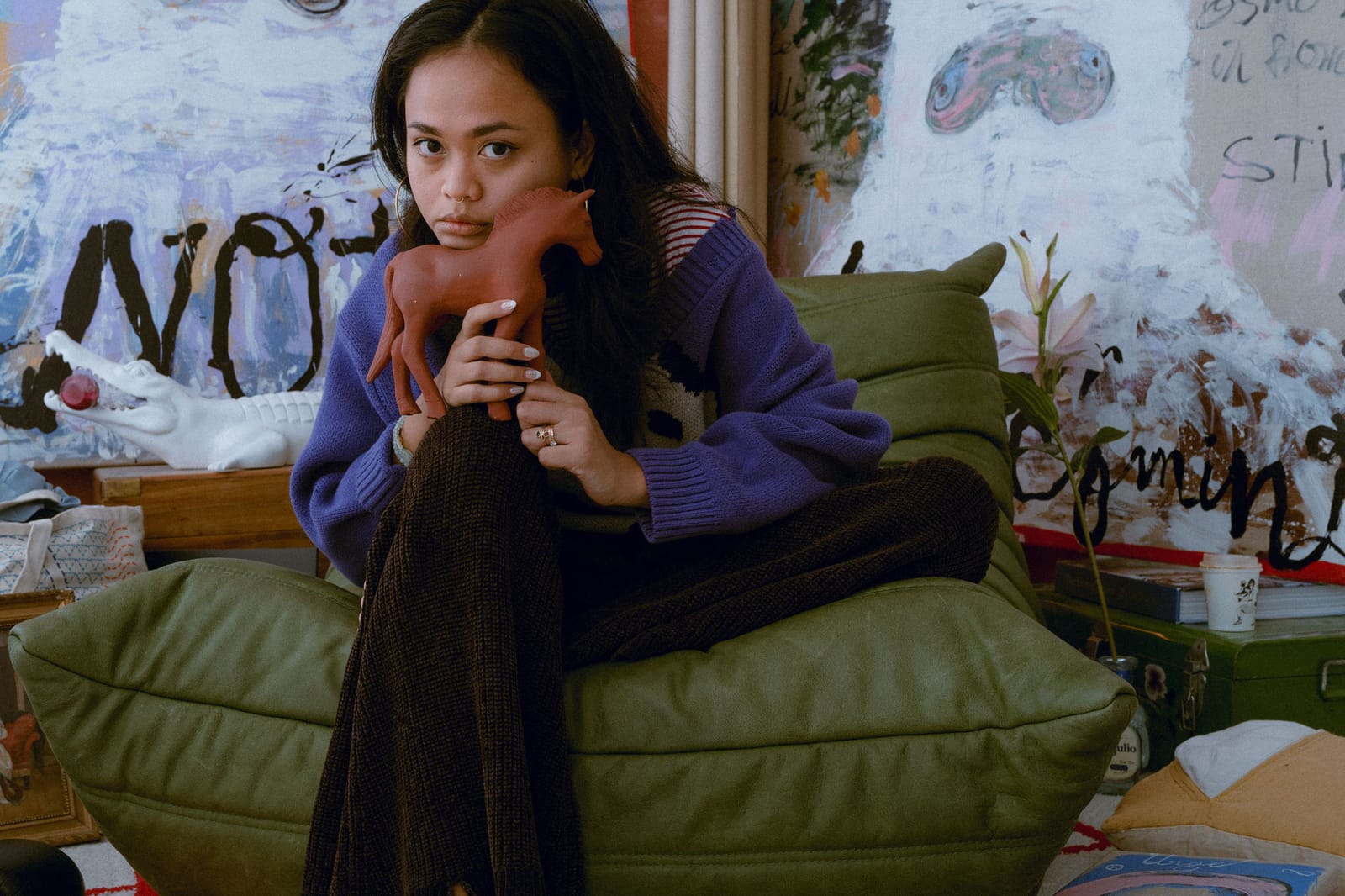
Tell us about the inspirations behind the works you’re showing.
During the pandemic, a body of work which became part of my solo exhibition in 2021 called Despite The Havoc navigated the breaking down of one’s identity & the disorientation we may feel in our sense of self during periods of transition. My figures were blurred, broken down, disintegrated and somewhat unrecognizable.
In 2022 the figures began to take new form from the remnants, faces began to take up detail and the use of pink became more aggressive. The Pinky Swear drawings launched an era of many pink works on paper, canvas and video. For me some shades of pink symbolize the antithesis of anxiety. Committing to this colour was an act of healing, to reclaim a sense of whimsy and playfulness at a time where everything seemed hopeless.
To blanket somber faced figures in these light shades of pink, allowed me to combat the seriousness of our reality at the time, without completely entering a space of denial. It allowed for duality, nuance and balance to exist. Where I was allowed to be hopeful and scared at the same time.
“The Seeker Girls” were born out of the ongoing pink series. Portraits of young girls at times in pig tails (like in many Indonesian elementary / primary uniform rules) gaze back at the viewer – often accompanied by text that mimic sentiments of ‘talking back’.The Seeker Girls to me embody the spirit of unapologetic curiosity, an ignorance to the concept of fear in failure and a loving sense of faith in adventure. Sometimes I think of them as these stubborn little girls on a mission to find truth and maybe save the world. Other times they exist just to hold my gaze.
Shih Yung-Chun
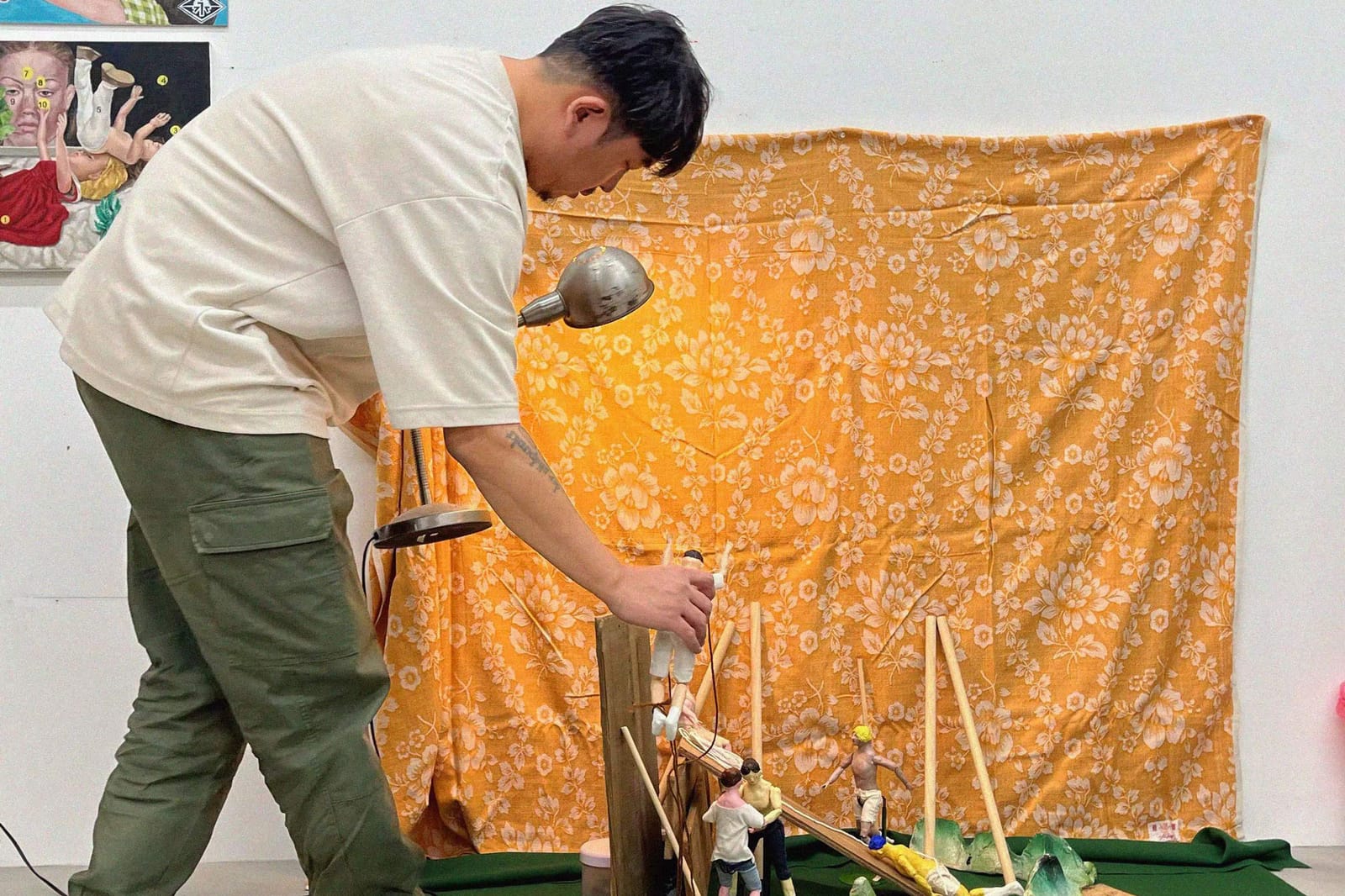
How do you interpret portraiture in your practice?
In today’s age of convenient technology, “reality” seems to be insignificant, and if I were to propose a new look for portraits in the contemporary world, the first thing that comes to mind is “faking”. Although painting is a way of creation that can be embellished at will, as it has been from ancient times to the present, I used two common retouching software to process my painting references in my two works, Toy packaging.J – swap face – Find your Best Face and Make you Prettier, first “embellishing” the reference material before drawing, and temporarily relegating the “embellishment” of the painting to a later stage.
Could you explain this further?
At the same time, I did some research on the definition of “portrait”. One of the definitions: According to the official definition of portrait in the simplified version of the Ministry of Education’s Mandarin Dictionary, “Portrait refers to a portrait of a person that shows the five senses, whether it is a photograph, a statue or a painting, and whether it is a full body, a half body or only a face, as long as it involves the “five senses” of a person, it is a portrait. In Toy packaging.J – swap face – Find your Best Face, I propose a “Guess You Better” face pairing through the face swap software, just like putting on a new mask, except for the replacement of the five senses, all other faces remain in their original form. Of course, this is only a software game, now you do not need to buy a physical mask, this toy packaging is set to show you how easy it is to change the face of the way. Maybe you can come up with a more suitable facial features than your original face through the cell phone software, and possibly randomly selected, our original real expressions, probably can not do so abruptly interesting, but also can not get a laugh. The work Make you Prettier makes the original plump and round blonde princess doll become more in line with current fashion tastes, the face and body you want just need to move your fingers to liquefy, even if the whole background has been distorted and deformed, it does not even know the real face of the blonde princess, but who cares? The act of retouching before showing a photo of your face has become more everyday than ever.
How do you incorporate these methods in your practice?
In terms of the topic, I have always been interested in the “absurdity of human behavior” in society. Therefore, I try to translate the acts of “faking”, “faking”, and “pretending” into the steps before painting, and I leap over the beautification process that painting should undertake.
Wang Qingyuan
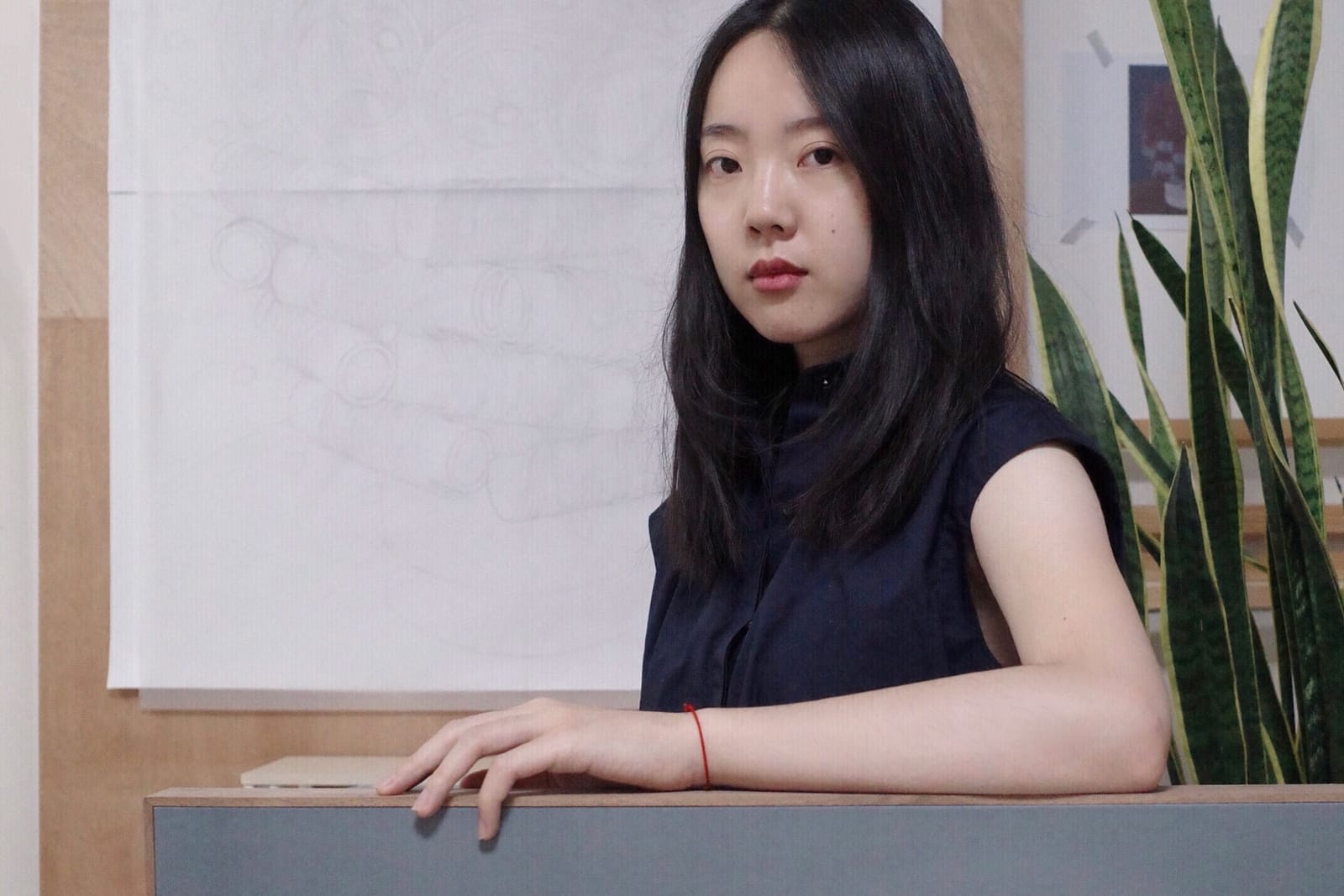
Tell us about your practice and what you’re presenting in the show.
For the past two years, I have been creating silk textures around wigs. The two works in this exhibition are from the new series Landscape Recreation that started this year. As an interstitial object between the real and the fake, the natural and the artificial, the wig has a characteristic that transcends nature. After completely disappearing from the subject, it becomes a kind of landscape, a landscape that carries multiple factors such as cultural phenomenon, aesthetic psychology and social identity.
Xue Ruozhe
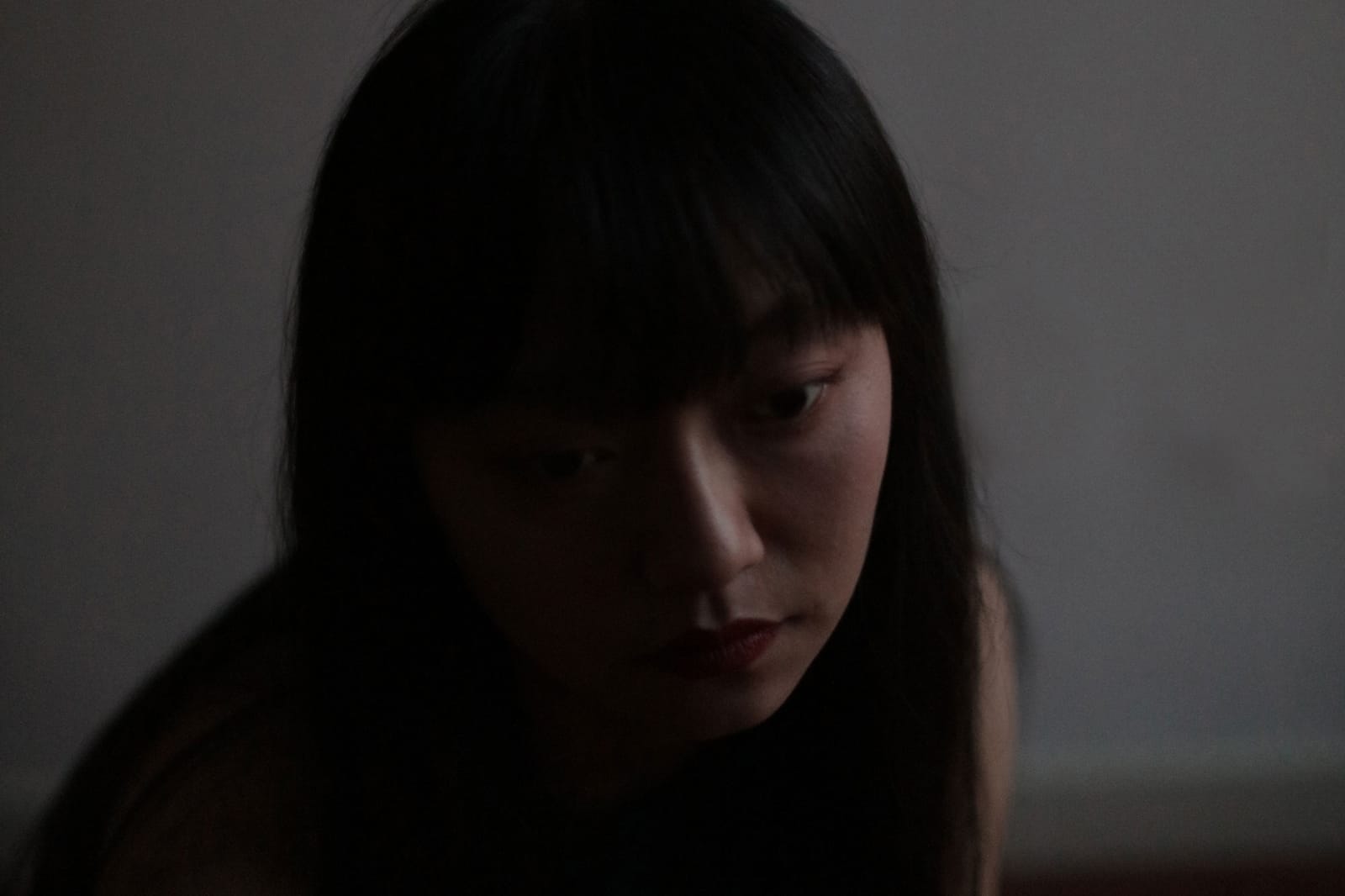
Describe your works in the exhibition.
Double Casts of R and Head II: Although faces were depicted and detected in both paintings, none of them are entirely defined as a “portrait”. They are conversations around portraiture. There is something else generated from the paintings.
Nobody Here
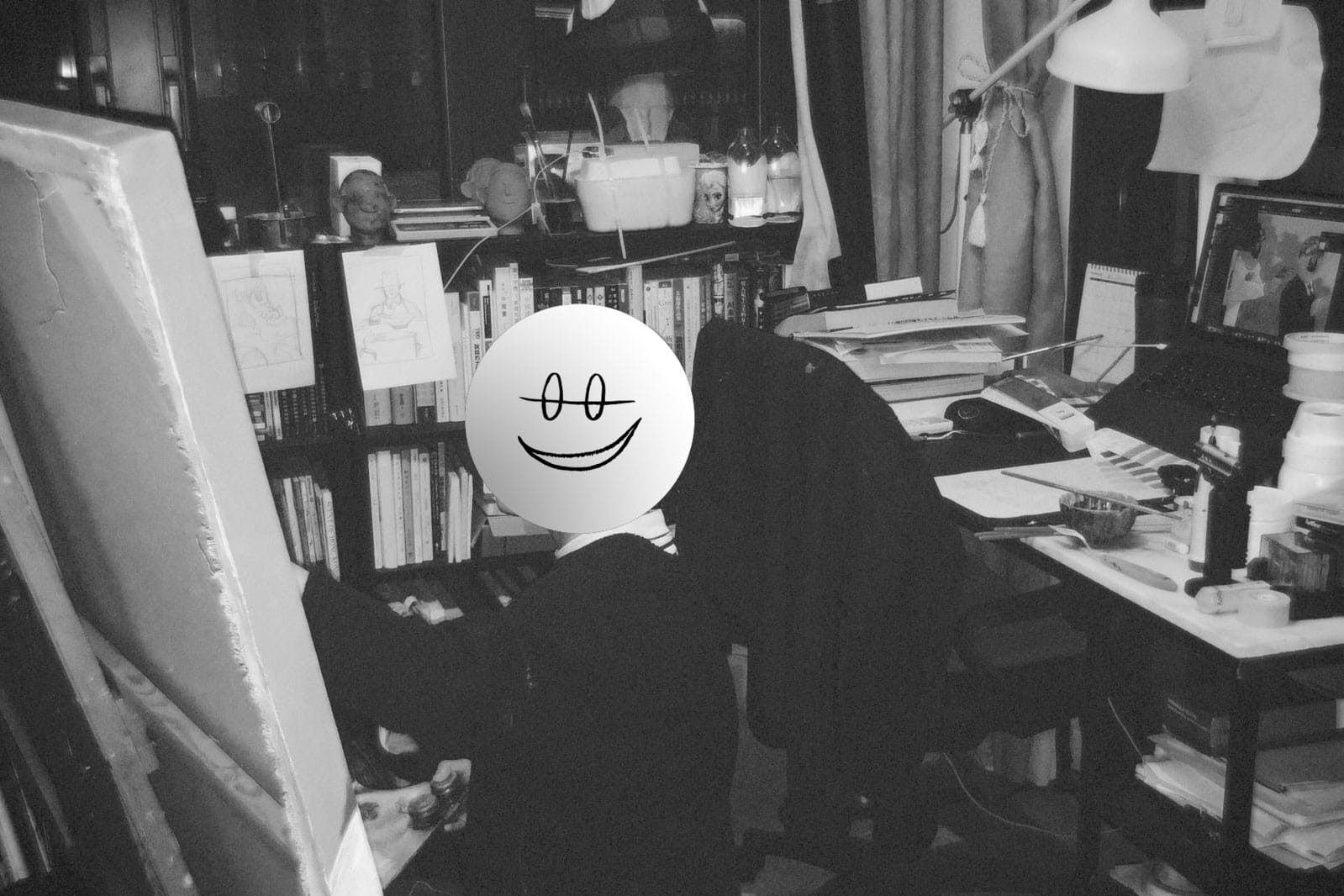
Tell us about your art practice.
Art can be an empowering means of absurdity to confront the absurdity of reality. The burning in my oeuvre is a kind of subversion of its own.
What are your thoughts on the show?
Global Citizens – Asia is the first group exhibition I can attend in person after these two years in Hong Kong. To share thoughts and ideas with artists around the world is always what I want to do.
Yang Du
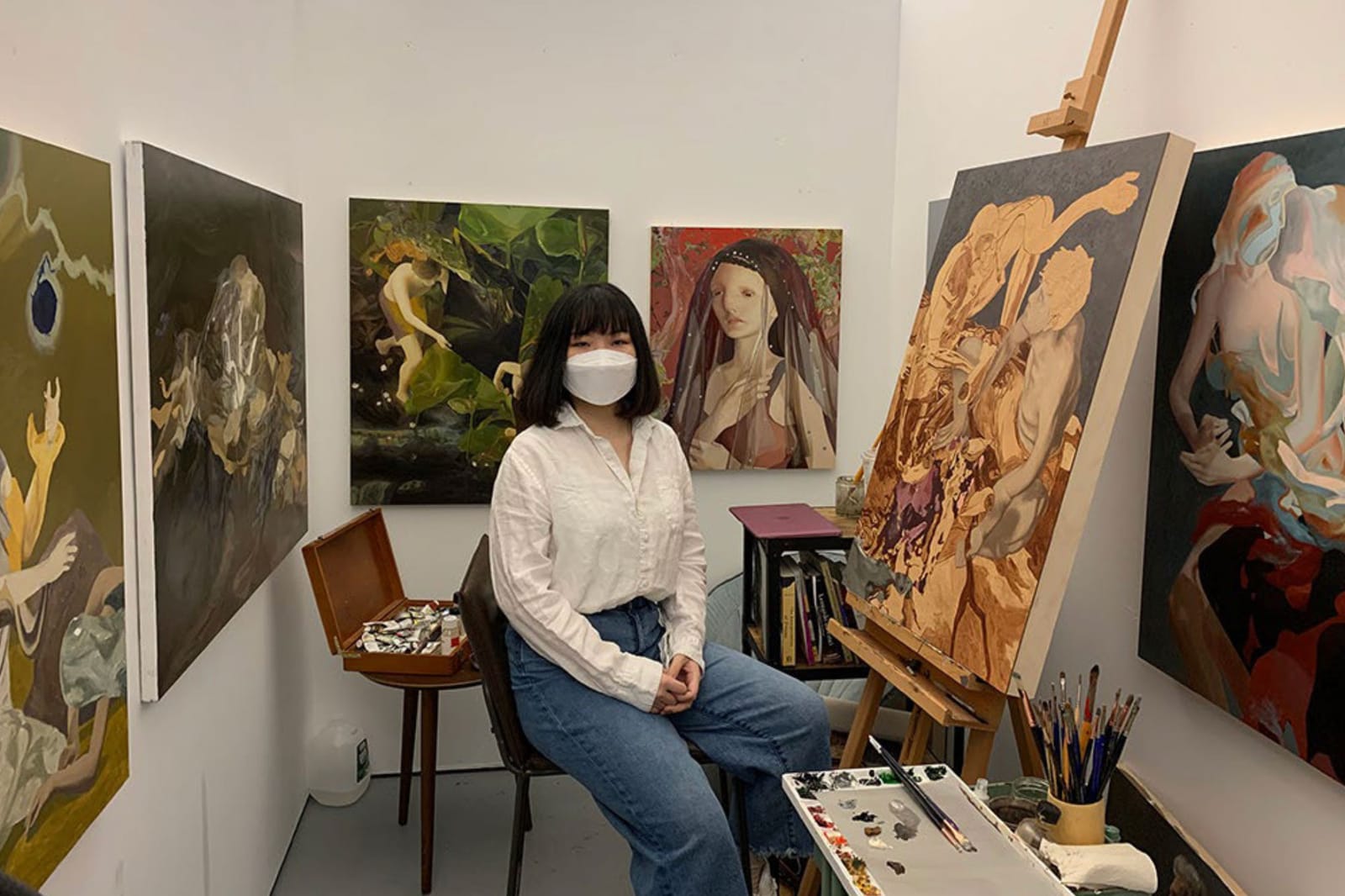
What are the themes that you’re exploring?
Curiosity and attachment to my roots have always been the most crucial values in my
upbringing. I often feel the want to explore the outside world, but after wandering for a while, I want to return to where I came from. The two are constrained by a circular tie, one of which periodically transports my heart far away to enjoy the thrill of adventure, and the other helps me avoid the possibility of getting lost and never knowing how to return.
Yutaka Watanabe
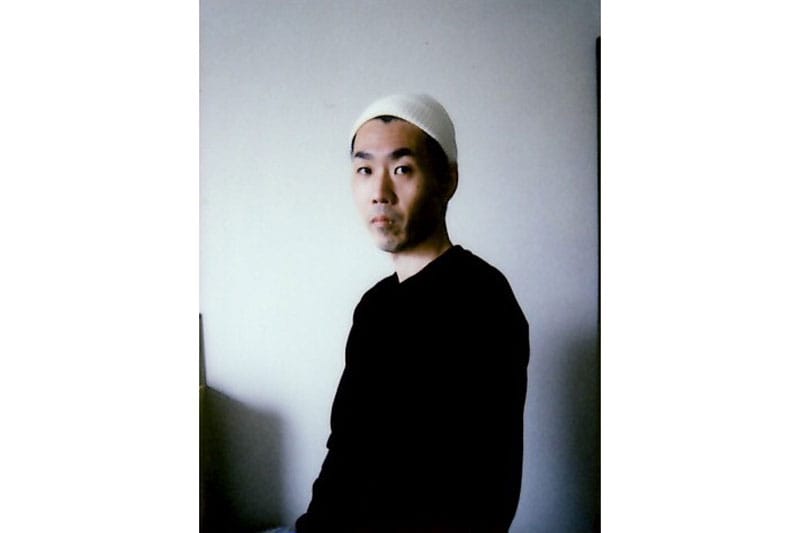
What’s the inspiration behind your works?
What motivated me to paint this piece was due to the spread of the coronavirus. Most people in Japan still wear masks in their daily lives. I saw a young couple on my way home from work; they kissed while wearing masks and laughed at each other. I found that moment so funny and beautiful that I painted it in my work. I am interested in expressing in paintings situations that are difficult to realize in reality. So this work is a situation where a young couple is immersed in their world, not caring about a very dangerous situation.
Are experimenting with any new techniques?
I am looking for new painting possibilities by learning and combining techniques from various art histories. Because I hope that painting can be established as a strong entity as much as possible.
Zhang Haoyan
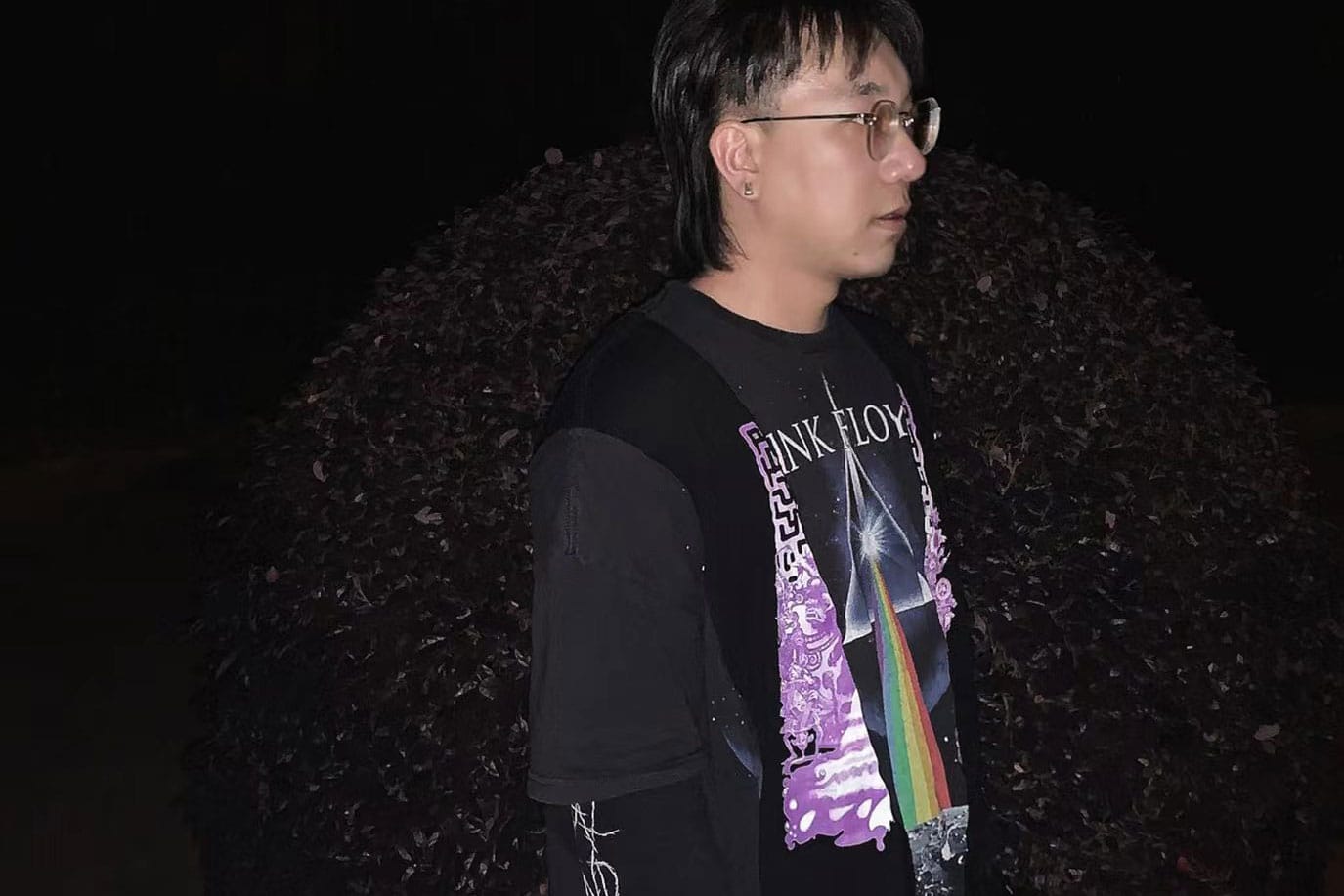
Tell us about the paintings you are showing.
These three paintings continue my creation methodology of film and television archeology, deconstructing and restructuring the sci-fi and thriller films in the B-movie group in the last century. The IP characters in these paintings deliberately use more props-like processing, presenting the artificial sense of science fiction vision in the early part of the last century. Based on its complex production industry and high cost, this slightly crude film and television technique has become less popular in today’s mainstream sci-fi films, and has been replaced by computer visual effects with continuous technological innovation. Nowadays, with the advent of the era of short video and the progress of artificial intelligence, this visual effect has become a part of the pastime of the current people’s life.
In today’s society, which relies on more efficient, faster, as well as computer visual effects, the slightly rough and clumsy props in the early B-movie undoubtedly appear more realistic and warm.
What are your thoughts on this show?
I feel very excited about the support of this exhibition for young artists. I appreciate all the artists participating in the exhibition. The theme of the exhibition is under the background of globalization. I think it is very important for artists from different regions to communicate with each other through their works.
Zhou Xinyu
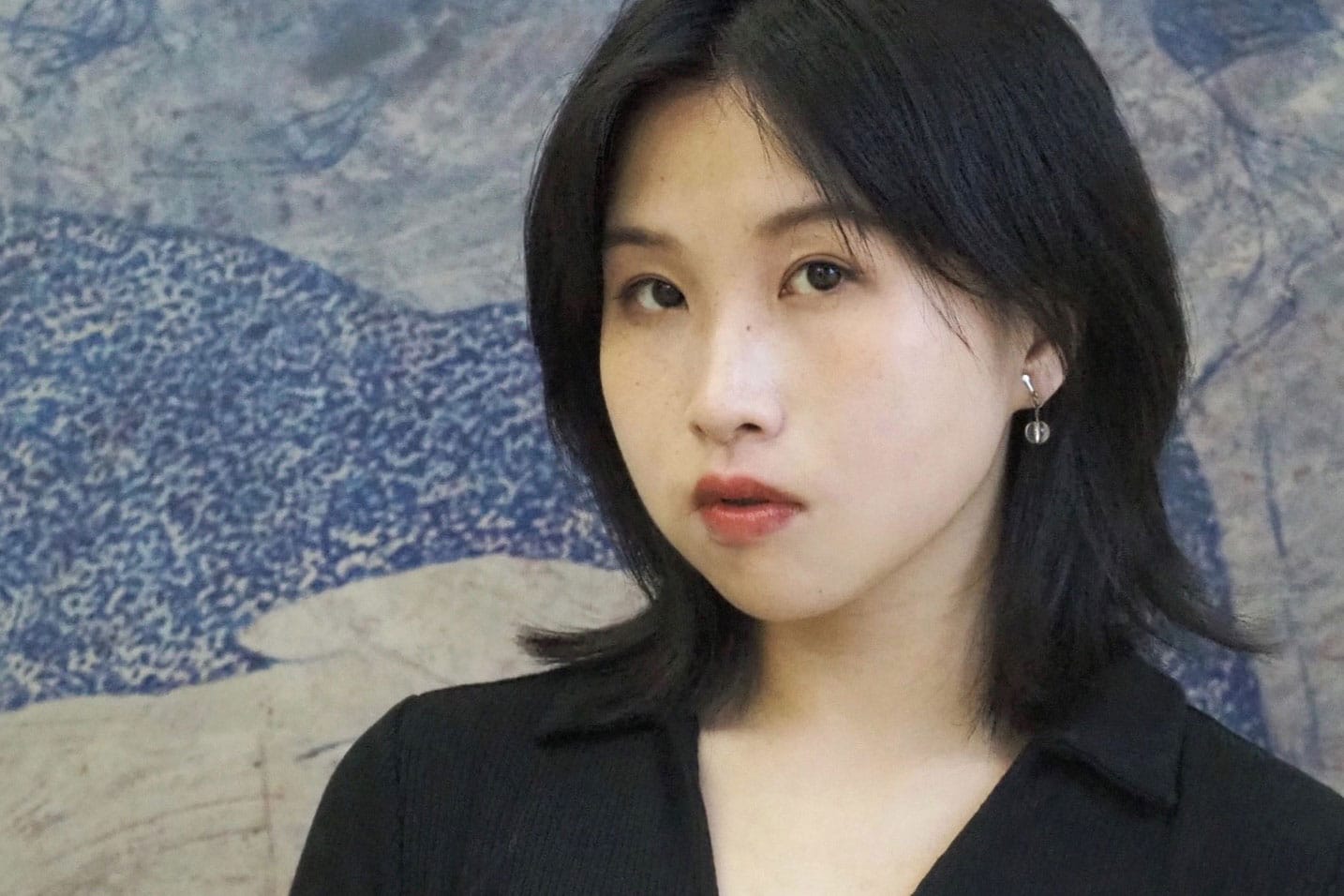
Tell us more about your portraits.
These three works are all new works in the last six months. In the last six months, I hope to present a more “essential” human image in my works, removing the characteristics of the portrait character itself, in other words, I hope the figures in the painting have more objective material properties.
“Untouchable No.1”is the first in a series of works.In this work, the white part in the middle of the goose egg shape is actually the face of a person, and I used pastels to outline the features of the person, and oil sticks to fill in the background, and in the process of using acrylic material, the features of the person outlined by the pastels were also dissolved, leaving only very faint traces. I was fascinated by this “fading” sensation, and I used wet brushstrokes to sketch an ethereal silhouette of a figure in profile, an eye, and a bullet hole mark on the disintegrated face. I have always wanted to fix the blurred montage of memories or the fleeting fragments of reality in the form of paintings. These memories and fragments are untouchable, and I will continue to create this series afterwards.
In the process of creating “Pouring “, I often stared at an old work in my studio, and the painting was never finished. As the late winter dusk falls, a blurred image grows in my mind, and this image is mapped onto this old work. As the acrylic paint covered off the old work, these words came to my mind, “Past time, pouring, all pouring from his eyes, constantly, constantly pouring, like a rainstorm that never stops.” Under the new layer of paint, the old work vaguely reveals some cracked texture, and the painting grows into what it seems to be supposed to be.
I juxtaposed a white woman’s face with a distorted version of her in “Distorted, twisted,” a work inspired by my previous work “When I apply a distortion filter in Photoshop, my painting my looks like Francis Bacon.” I was interested in the random digital effects that occasionally create a connection and echo to the classics, and also in the materials I chose for this work. I also chose a fragile and thin paper cover a wood board for this work, continuing my earlier idea of using materials to give the work a deeper sense of fragility.
Could you tell us more about your fascination with portraits?
Photographic portraits usually present a factual and objective record, while paintings, in addition to the subjective treatment of the artist, often have some serendipity brought about by the nature of the painting material, which makes the painting itself begin to grow. This serendipity and the unknown is why I have always been fascinated by the medium of painting.
Auto Moai
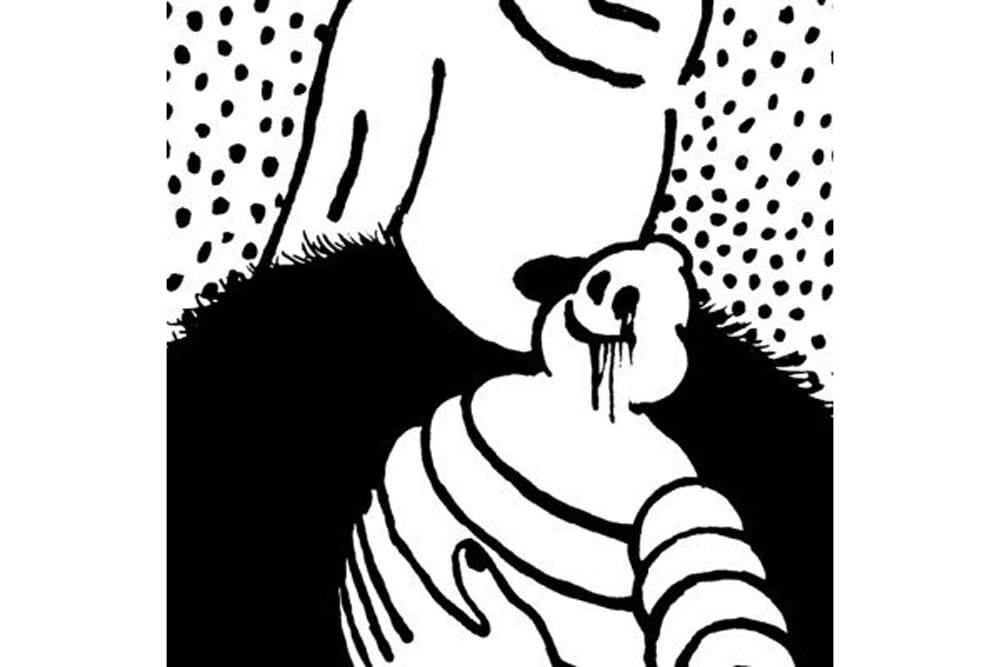
Tell us more about your Anonymous series that you’re presenting in Global Citizens – Asia?
The Anonymous series has been in the works since around 2018, with plain backgrounds highlighting the faceless human-like presence and the uncertainty of reality and existence.
Éi Kaneko
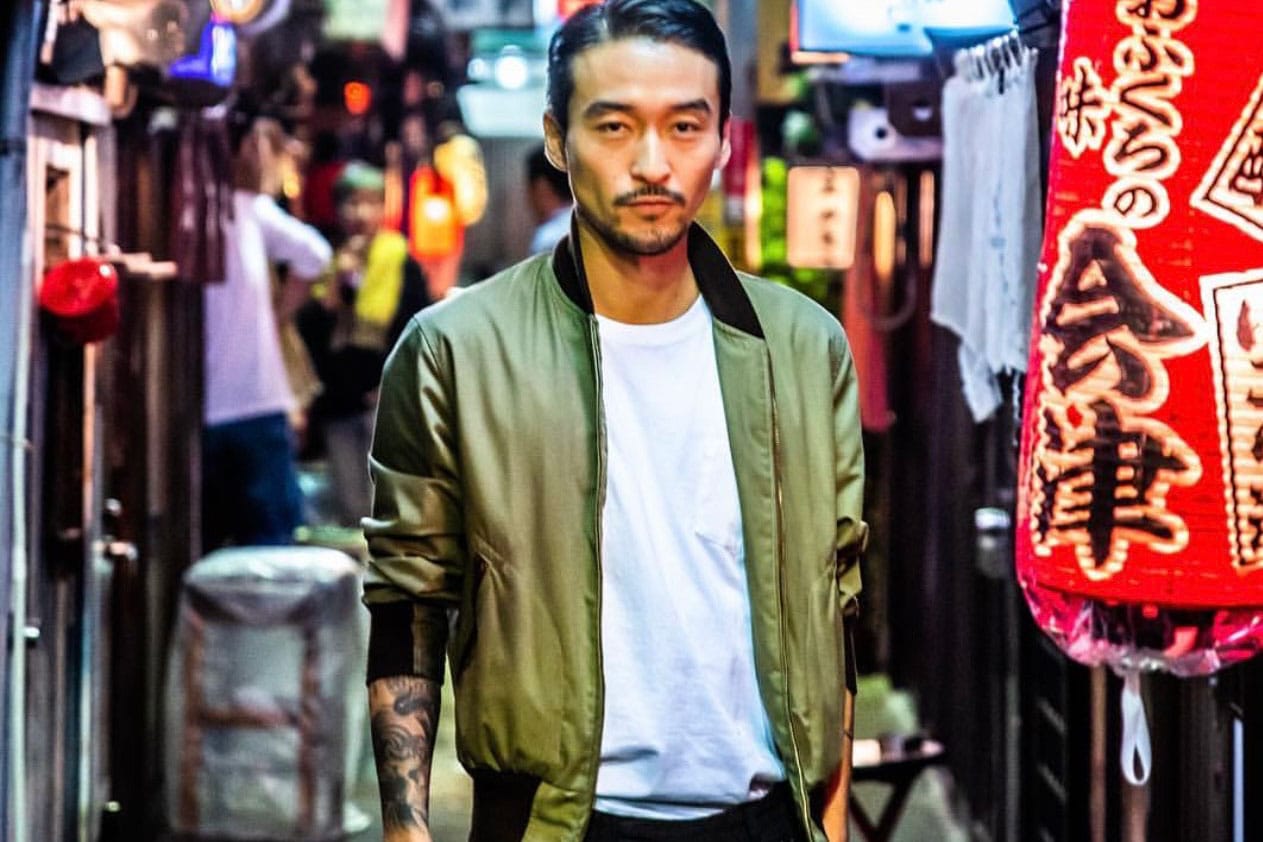
How would you define your portraiture?
There are images in between images, portraits in between portraits. This fascinates me and has been a consistent basis in which I build my work upon.
¥ouada
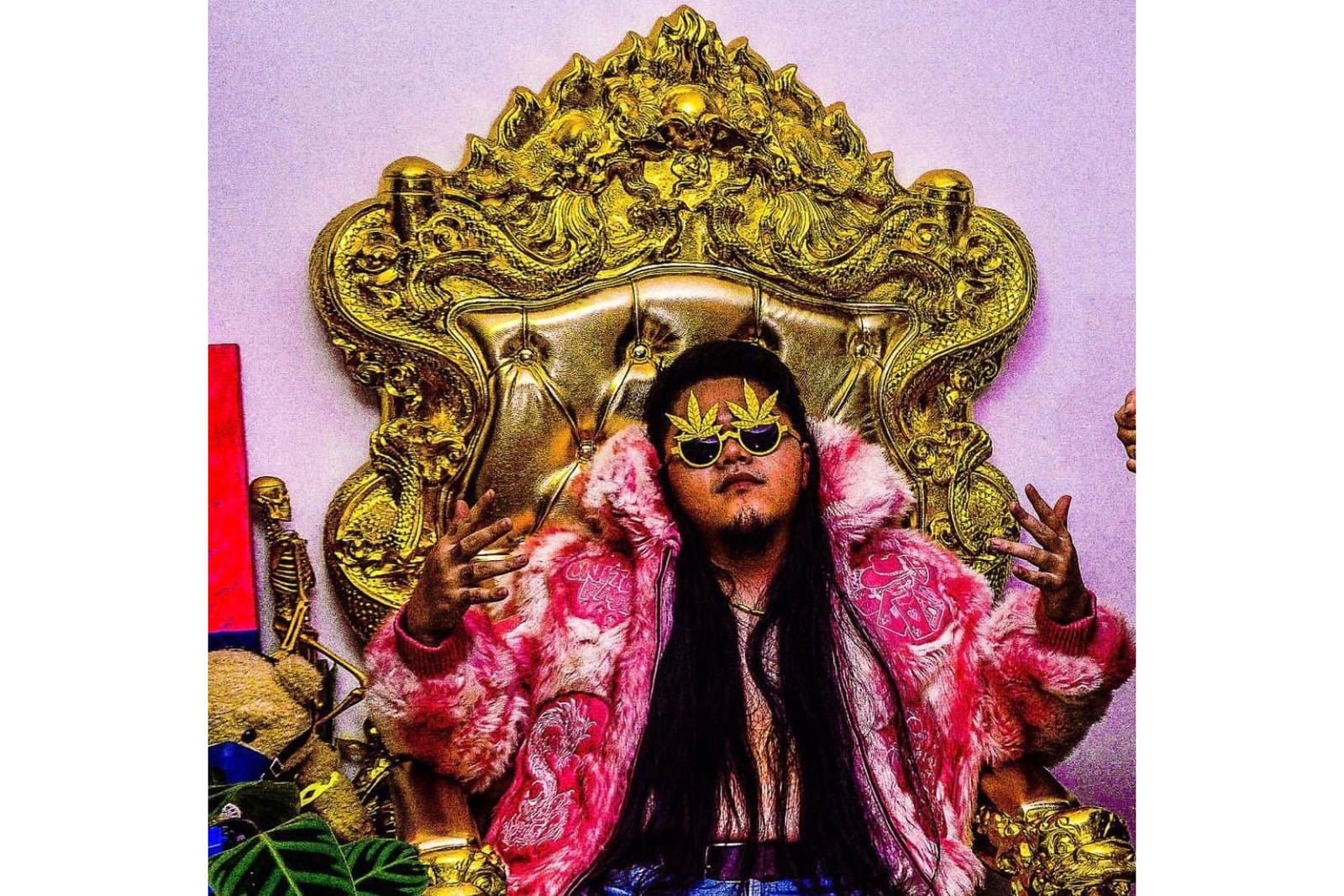
What’s the source of inspiration behind your works?
The source of inspiration is what I see in my daily life. The group show is great and I really like the two cool spaces.
Photos courtesy of the artists
